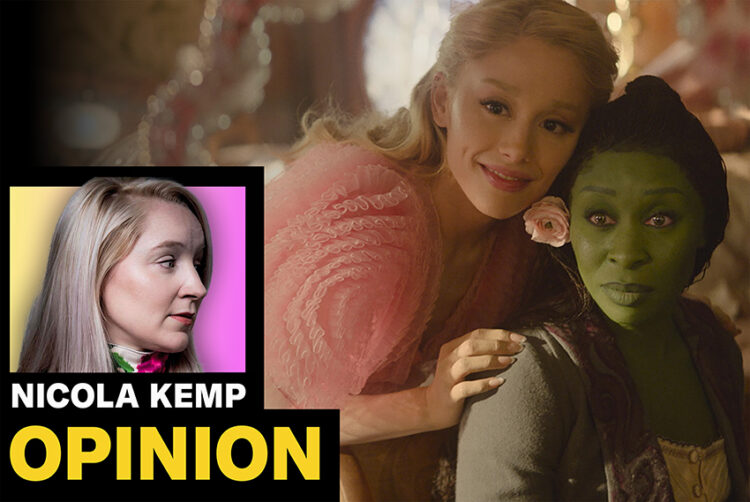Is it time to cut back on ‘junk media’?

Opinion: 100% Media 0% Nonsense
Everyone accepts that ultra-processed food — otherwise known as junk food — is bad for us. As audiences or advertisers, are we prepared to accept that ultra-processed media is bad for us, too?
Much of the food we eat is harmful. Can the same be true of our media diets?
It has been 15 years since Michael Pollan published Food Rules, a small but compelling book in which he introduces the unappetising term “edible, food-like substances”. These ultra-processed foods tend to have more than five ingredients, make health claims, are cooked by a machine and are advertised on TV.
The author points out that populations that eat like modern-day Americans — lots of highly processed foods and meat, lots of added fat and sugar, lots of refined grains — suffer high rates of obesity, Type-2 diabetes, cardiovascular disease and cancer. But populations that eat more traditional diets do not have the same degree of health problems.
This does not seem to be controversial. Most people seem to have a good sense of what is healthy food and what is not.
But what about our mental health?
Social media usage and smartphone addiction are often blamed for the current mental-health crisis that public-health leaders are warning us about.
Is it fair to label some forms of media as unhealthy on the basis of being “ultra-processed” and should our industry consider how we can act more responsibly as the ultimate providers of today’s media ecosystem?
Two criteria of ‘quality’ media
The productivity expert and computer science academic Cal Newport argues that we should.
In a recent episode of his Deep Questions podcast, Newport draws a ‘quality pyramid’ in which minimally processed media — which he terms as “linguistic media” (books) — as placed at the bottom, TV and other mass/broadcast media are in the middle, and social media (the most ‘processed’ of all media types) is at the top to signify lowest quality.
He uses two main criteria for what is ‘high quality’ versus ‘low quality’:
>> the curation of media: how much skill and craft has been deployed to create content
>> the delivery of media: how much work a human has to do to consume media versus how much work is done for them by a machine to serve it to them
Books and other printed publications are media’s equivalent of broccoli, Newport argues: “This is a type of media that’s been around for a long time, at least 5,000 years, not enough time for a lot of brain evolution, but plenty of time for cultural evolution… we know how to deal with them. Our mind knows how to handle them.”
In the middle we have “moderatedly processed food”, such as tinned soup and pasta, which we can compare to mass media like TV, radio, podcasts and email newsletters. These are media created by professionals and are difficult to curate, which gives them that inherent “quality” factor, as well their impact on the human brain as highly attentive platforms. While it’s easy to watch ‘too much’ TV in the same way that it’s not great to eat too much pasta, it’s often written off as being ‘not that bad’ if taken as part of a broader balanced diet.
Then we have “ultra-processed” food, which are the “edible, food-like substances” Pollan warns us about — food which is specifically engineered to be hyper-palatable but has very low nutritional value.
Avoid ‘ultra-processed media’?
We should think of social media as “ultra-processed” media, Newport argues.
“There’s all sorts of media content. We can be savvy about how we approach it and read a bunch of books, have some more structure and moderation about stuff like TV and streaming and podcasts, and then stay away from the digital Doritos. It’s completely compatible with a healthy media consumption diet.
He goes on: “I found this analogy to food really useful because it helped me see how strange and unusual and eccentric and narrow and specific social media content is. And when I see it as ultra-processed food, I can recognise it’s high tech, I can recognise a lot of advances were needed to make this possible, and I can also say, I don’t want any of that on my plate.”
It’s a compelling argument, but it’s uncomfortable terrain for people who work in media and advertising.
Media spend globally has grown in the last 15 years largely as a result of growing activity on just the sort of platforms that Newport says we should dismiss as “low-quality”: social media display and video.
“It’s the weird hyper-palatable but foreignness of social content, just like on TikTok, it’s these weird visual forms… it’s not the way we’ve ever seen content before, but it just works, right?” Newport says. “On Twitter, it’s text but it’s more about this weird sort of hyper-argumentative, tribal sort of cynical warfare…. Instagram, you get these weird visual niche cultures.”
On YouTube, meanwhile, content creators like Mr Beast have become very successful by “ultra-processing” their videos, too. Newport describes these videos’ editing rhythm as “unlike anything else that existed before” as it is “breaking stuff down and reconstituting” content to be super appealing to our eyes and ears, much like a Snickers bar has been engineered to appeal to our tongues and stomachs.
The same conclusion is clear: “We don’t need ultra-processed content. Or if we do, eat sparingly and don’t feel like somehow this has to be the core of our diet…. it’s shallow, it’s low quality, it gets you in your head, and you feel bad.”
You are what you advertise against
I once compared this to a world of audience snacking versus one of balanced meals. But the content of those snacks, matters too.
The easy thing for media buyers to say on behalf of advertisers is that spend should follow audiences. But that argument depends on a belief that all media content’s quality is subjective in nature.
Whereas no one seriously believes that balanced meal of vegetables, protein and carbs is as good for you as a chocolate bar and a bowl of granola, this industry must, at the very least, be receptive to the argument that there are objective attributes of quality that should be reflected in the price of media as well.
Especially if we should be thinking of some media formats as “watchable, media-like substances”, akin to Pollan’s description of junk food.
It’s relevant to regulation, too. The US solicitor-general has already set the hare running by equating social media to smoking and last month called for tobacco-style warning labels.
As Keir Starmer took office as UK prime minister last week, trade-body leaders were quick to point out the merits of “self-regulation”, as if to pre-empt any attempt by new culture secretary Lisa Nandy to look again at “online harms” legislation.
5 things the ad industry wants from the new culture secretary
This is the first time this sector has contained such a huge online media sector and had to contend with a progressive, interventionist party being in power of an advanced nation. Unlike in the US where government seems perpetually divided and broken, Labour has a huge majority to do whatever it likes for five years.
As for advertisers, context matters. Just as you are what you eat, you are what you advertise against.
It may be worth everyone paying a bit more attention to how media is cooked, not just how it is consumed.

À lire plus tard
Vous devez être inscrit pour ajouter cet article à votre liste de lecture
S'inscrire Déjà inscrit ? Connectez-vous









